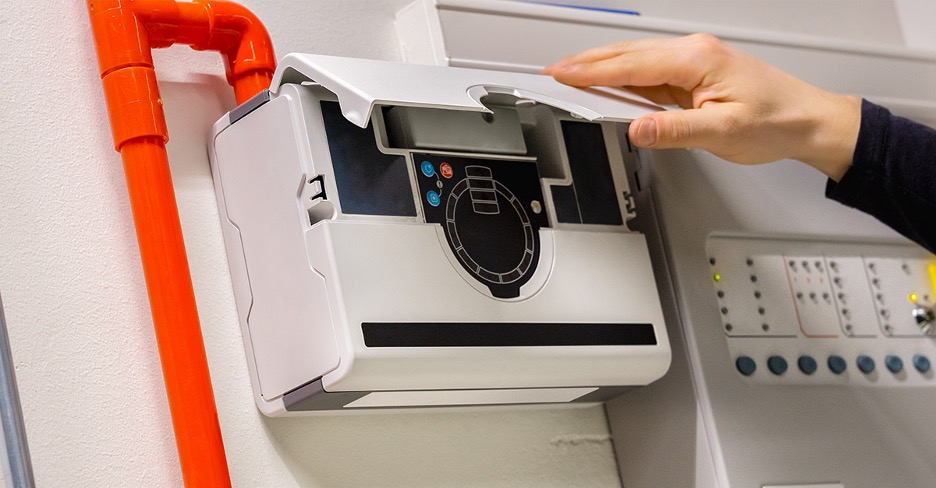Removable storage has been an important element in the adoption and evolution of a vast array of consumer technology. Over the years, SD memory cards have also become an indispensable part of an even larger industrial ecosystem. Industrial versions of SD and microSD memory cards are different than those used for consumer applications, as they are specifically designed to support and advance industrial use cases.
Designed for Extremes
Many SD memory card manufacturers focus on industrial applications that require high performance, unquestionable reliability and availability. SD memory cards that are introduced as industrial are designed to meet the performance, capacity and quality required for devices or systems that are used in extreme environments and they usually have a few features that are a proprietary enhancements to the SD specification.
For example, SD memory cards used in airplanes need to withstand rapid changes to air pressure, temperature, altitude and turbulence. To achieve this, industrial memory cards are made of tough, high-quality components that can perform dependably not only in harsh conditions, but also over long periods of time. This ensures maximum availability with minimal downtime.

In addition, industrial SD and microSD memory cards have high endurance capabilities*, which means they can sustain a higher number of read/write cycles, helping ensure longevity. This increased durability is not only beneficial for day-to-day conditions, but also in specialized industrial settings or remote locations. They have higher tolerances for hot and cold and are designed to function in a wide-range of settings– from sub-zero temperatures as low as -40˚C (-40˚F) all the way up to 85˚C (185˚F). Industrial memory cards can also withstand vibrations and shocks, as well as grit, particulates, and even corrosive materials while maintaining their data and functionality.
Designed to be Used Almost Anywhere
Because of their robustness, resiliency and durability, industrial SD and microSD memory cards can provide superior performance when compared to other storage technologies. One of the benefits of removable storage is that it can be easily swapped out if there is ever a problem with the memory card itself, thus providing an easy to repair solution.
The need for this unique capability was highlighted by a recent flash wear out, which prompted Tesla to recall some of their Model S and Model X vehicles. The failing eMMC NAND flash memory was linked to a touch screen that gave users access to the backup camera as well as functionalities such as HVAC controls and turn signals. The recall could have been avoided with the use of industrial removable storage. Not only are these cards resistant to the high temperatures generated by the power requirements of the large screen, but they can also be easily replaced in case of failure.

This distinctive feature combined with their resistance and durability makes these cards ideal for a wide range of applications:
Security
Video monitoring for security purposes relies heavily on the speed and dependability of SD and microSD memory cards. Surveillance cameras need to function whether they are installed in an air-conditioned lobby or a sweltering construction site. These devices can be used in many different settings: ranging from drones, to mobile security terminals to biometric authentication locks that grant access for authorized individuals in remote buildings.
Automotive/Transportation
In the transportation space, industrial SD and microSD memory cards are not only used in dashcams for corporate and fleet vehicles, but also used on trains, ships and over the road trucking applications. They can help ensure the security and safety of cargo by storing video footage. They can also be used in GPS applications to track location. In other instances they are used to monitor vehicle conditions such as payloads, maintenance issues, temperature fluctuation, moisture levels, vibration, pressure changes and telematics.
Weather and Climate
Ruggedized memory cards are used extensively to monitor weather and climate-related conditions. This includes video and sensor applications used for fire detection in isolated areas of a forest, tracking the seasonal rise and fall of water levels on unmanned islands or tracking snowpack on remote mountains. In other use cases, time lapse video/photography devices utilizing removable storage can even track plant lifecycles and geologic events over extended periods of time.

Internet of Things (IoT)
Both massive outdoor digital signage and very small IoT devices require reliable cards with high endurance capabilities. Micro computing devices for IoT that operate with very small computing circuits, such as Raspberry-Pi, are able to utilize an SD or microSD memory card. They can be used as not only the main storage option, but also to store and enable the operating system and other necessary device software. This allows users to actively monitor the integrity of machines, vehicles, networks and buildings during operations and throughout their lifecycles to prevent failure and reduce maintenance costs.
Realities of a Data Driven World
The need for reliable, high-capacity storage solutions is even more critical as industrial applications everywhere are becoming increasingly data-driven. Manufacturers who include slots for industrial SD and microSD memory cards in their products can have the confidence that vital data will be kept safe and secure, even in the most unforgiving environments.
*Note: All the features not included in the SD Standards (e.g. enhanced temperature operation ranges, endurance and/or improved vibrations and shock resistance) are proprietary of the specific card manufacturer. The user (or OEM) should carefully read the memory card’s enhanced feature specifications provided by the manufacturer, as well as recognize its testing conditions before doing any market comparisons between various card providers.
Yosi Pinto is chairman of the SD Association. Pinto can be reached at Yosi.Pinto@wdc.com.




